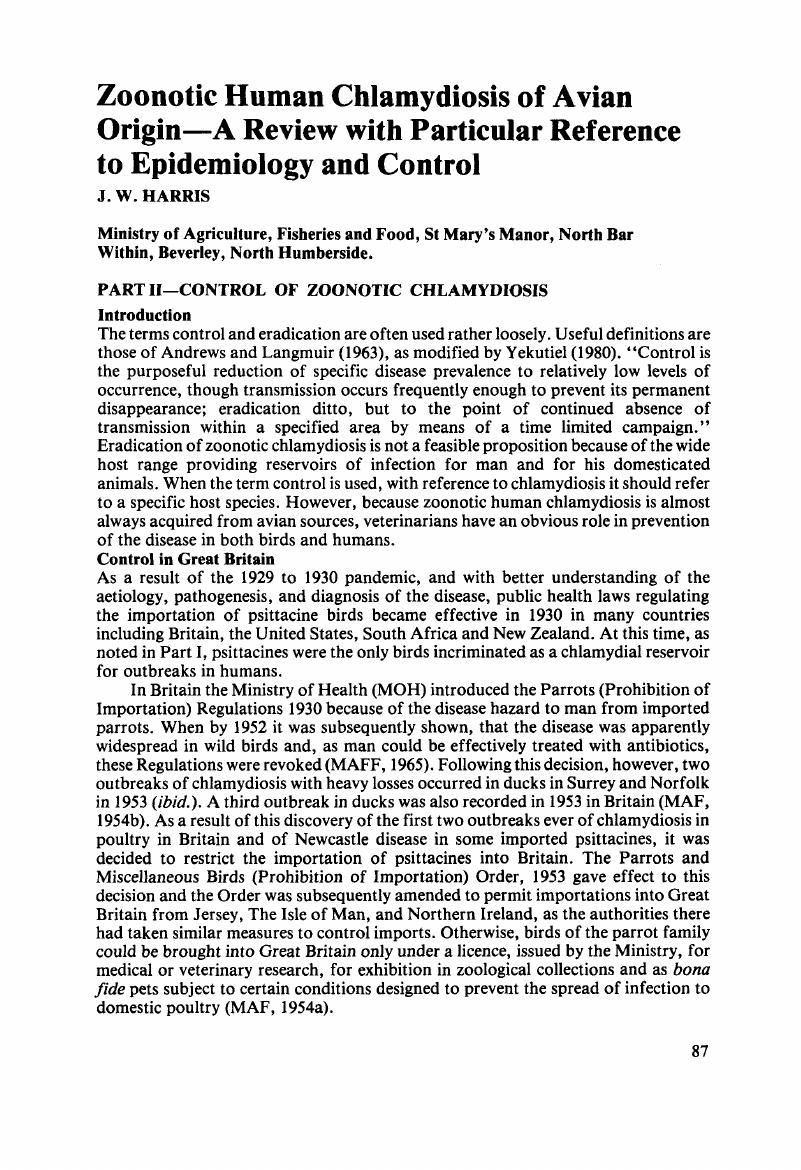Crossref Citations
This article has been cited by the following publications. This list is generated based on data provided by Crossref.
Ashton, W.L.G.
1984.
The risks and problems connected with the import and export of captive birds.
British Veterinary Journal,
Vol. 140,
Issue. 4,
p.
317.
Maffei, C.
Marracino, A.
Di Stanislao, F.
Pauri, P.
Clementi, M.
and
Varaldo, P. E.
1987.
Psittacosis in a highly endemic area in Italy.
Epidemiology and Infection,
Vol. 99,
Issue. 2,
p.
413.
HINTON, DG
SHIPLEY, A.
GALVIN, JW
HARKIN, JT
and
BRUNTON, RA
1993.
Chlamydiosis in workers at a duck farm and processing plant.
Australian Veterinary Journal,
Vol. 70,
Issue. 5,
p.
174.
Salisch, H.
Von Malottki, Kirstin
Ryll, M.
and
Hinz, K.-H.
1996.
Chlamydial infections of poultry and human health.
World's Poultry Science Journal,
Vol. 52,
Issue. 3,
p.
279.





